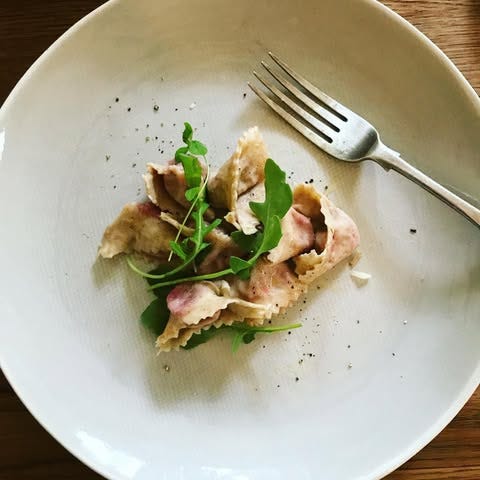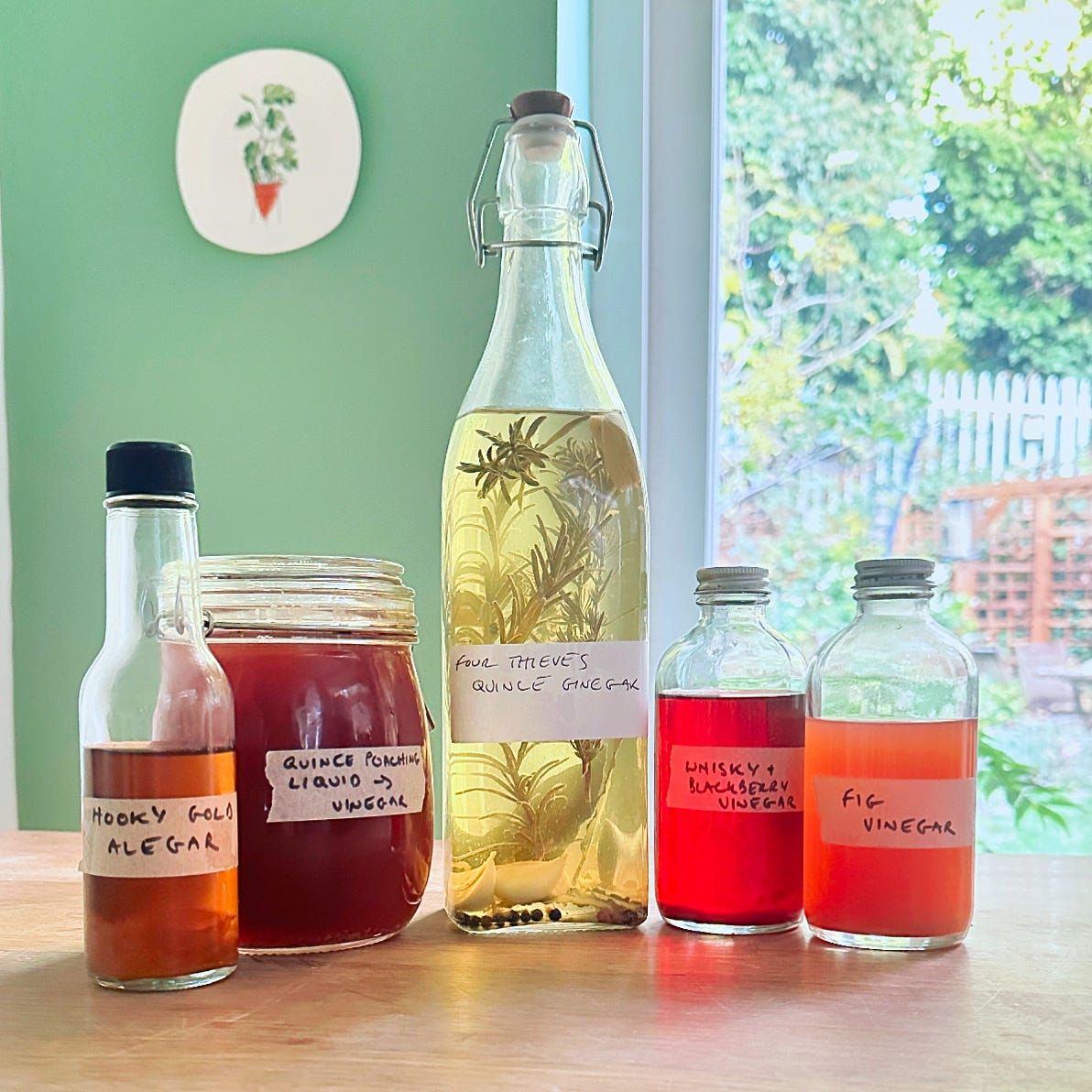In Good Taste #68: Any-booze Vinegar
An easy, customisable method to make vinegar with any alcohol; fancy flour; Gladiator II
Well, hello there! How are you?
Good I hope.
(Not up for the chitchat? Completely get it. Click the email title to go to a web-based version then jump straight to the recipe or Cultural Fun.)
I am cold. It snowed here on Tuesday, a damp kind of snow that didn’t settle. It’s been beautiful since - bright and wintry - but very, very chilly. But a piece I wrote on gut health for BBC Good Food is apparently doing well so hurrah for that.
Also, I took delivery this morning of some Solina flour from Shipton Mill, made with an Italian heritage wheat. It’s grown 1200 metres above sea level in the foothills of the mountainous Abruzzo region and has been called the “mother of all grains”.
This batch is destined to become thick, silky pappardelle to be served with a rich beef cheek or four mushroom ragu. Part of the menu for my supper club at the Lacy Nook next Wednesday. Tickets are still available. They are £65 and include a welcome cocktail and four-course seasonal feast. Nine dishes in total! The full menu is below and I would love to see you there.
Snacks
Kimchi devilled eggs
Jerusalem artichoke and goats curd
Pickle plate
Focaccia
Fresh Pasta
Dauphinoise ravioli
Pappardelle with beef cheek ragu/four mushroom ragu
Seasonal Salads
Roast pumpkin with radicchio and ruby kraut
Charred greens with four thieves vinaigrette
Dessert
Preserved lemon parfait baked Alaska
I visited Shipton Mill a few weeks back on a trip organised by the Guild of Food Writers. We had an absolutely wonderful day, meeting John, the soon-to-be-retired head miller who had worked there for 30 years, and making flatbreads with baker Chris who also told us all about his research into heritage grains including solina.
It reminded me of my home-grinding experiments during the lockdowns of 2020 when I discovered that flour is so much more than a staple ingredient. We think of it as a neutral - something to hold other flavours - but it can have so much character of its own from sweet and nutty to peppery bitterness.
Looking forward to sharing the solina with people…
Ferments for sale
For the first time ever my ferments are going to be available to buy at the Hornsey Vale Community Centre’s Green Christmas Fair.
I’m not able to attend in person but pop along to the Community Centre at 60 Mayfield Road on Sunday 1st December between 2 and 6pm and you will find some jars of deliciousness and much else besides. Wreaths, soap, cards, candles, mulled wine, etc. etc.
Four of my favourite ferments will be available:
Winter kraut
Spiced Ruby Kraut
Vegan Kimchi
Fermented Hot Sauce
They’ll be £6 each or 3-for-£15. If it goes well then I might roll out production further and start supplying mail order and local shops. Let me know if that’s something you’d be into!
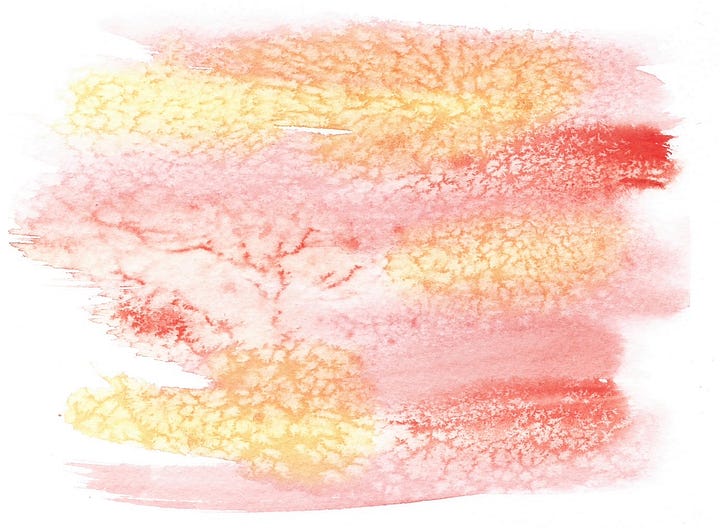
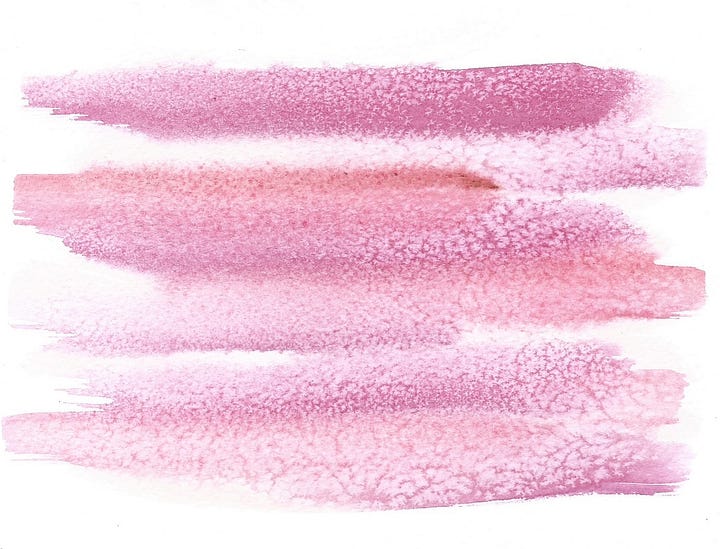
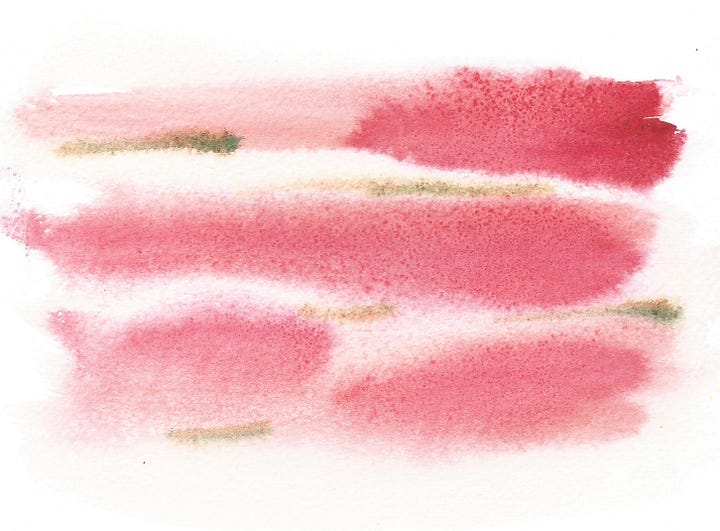

I even made some nice labels. Since the lacto-fermentation process relies on salt, they’re based on salt-sprinkled watercolour paintings. The grains create an interesting mottled effect. Can you guess which colour combo is for which jar? Come back next week to see the full product reveal…
Recipe: Any-booze Vinegar
Following last week’s inspiring conversation with Dr Caroline Gilmartin I though we’d start on our own homemade vinegar. I recommend her book if you’re getting started. It’s very thorough but you can just skim through for the basic method and recipes if you don’t want to engage with all the technical detail. (I will confess that I have still not titrated anything.)
Angela Clutton’s The Vinegar Cupboard is another good resource.
As Caroline said in our chat, the great thing about making vinegar is that “you can actually start at any point along the vinegar journey. You can start with apples. You can start with apple juice. You can start with cider.”
If you start with apples or apple juice you’ll be fermenting them into alcohol before turning that into vinegar. Which is fun but let’s approach this the easy way and start with alcohol. We can come back another day and start with fruit.
All we’re going to do now is choose some booze - something flavourful so we’ll end up with an interesting vinegar - and add a vinegar “mother”. Depending on what drink we start with we may need to dilute it to a level where the acetic acid bacteria can survive. Then all we need is patience. Just sit back whilst the bacteria convert the alcohol into vinegar then bottle and enjoy.
The quantities below will make you 600ml of vinegar. Obviously you can scale up or down according to your needs and vessel sizes. Just keep the proportions the same.
Ingredients
Your chosen alcohol, diluted with water as above to get 500ml total
100ml raw apple cider vinegar (see note)
Method
Put the alcohol (diluted if necessary) in a jar. Make sure the jar is scrupulously clean and has enough room for 600ml liquid in total with a decent amount of headroom.
Add the vinegar starter. Top up with your raw cider vinegar.
Cover. Acetic acid bacteria need oxygen so don’t seal the jar. Instead cover with a square of muslin or a sheet of kitchen towel secured with an elastic band. This allows air to circulate but keeps fruit flies at bay. Fruit flies absolutely love vinegar.
Leave for the bacteria to get to work. Put your jar somewhere warmish but out of direct sunlight and leave it for a couple of weeks. After this it will hopefully smell sour and have a semi-translucent rubbery layer on top. This is a vinegar mother and a sign that everything is proceeding according to plan. If you don’t have a rubbery layer but it smells/tastes acidic things are still OK.
Leave, tasting every week or so, until all the alcohol taste has disappeared. This will take between a few weeks and a few months.
Bottle. Once the vinegar is ready - acidic with no hint of alchohol, basically when it tastes like vinegar - it’s important to transfer it from a jar to a bottle and put a lid on. Something with a long, narrow neck is ideal as you want to minimise the surface area of the vinegar that gets exposed to oxygen. If acetic acid bacteria have converted all available alcohol to acid but are still exposed to oxygen they will start oxidising the acid into carbon dioxide and water, meaning your vinegar loses its strength. Store away from direct sunlight.
Notes (If Ifs And Ands Were Pots And Pans…)
When buying vinegar to use as a starter look for anything described as “raw” or “with the mother” as these have the live bacteria you want. Willy’s is great but spendy and I find Aspall’s very reliable. But anything will do. It doesn’t even have to be cider vinegar, this just tends to be the only “raw” vinegar that’s easy to get hold of. If you have your own wine vinegar (or alegar or anything from a previous batch) then you can use that instead.
Some of my favourites have been stout vinegar (very rich and flavourful), quince ginegar (from a quince gin liqueur I made last Christmas) and an inadvertent elderflower vinegar that was created when one batch of elderflower “champagne” went awry. I will try and recreate it deliberately next summer…
Once your vinegar is bottled you can age it if you like, which will produce more complex flavours. Or add any other flavourings you fancy. My whisky vinegar (in the pic above) was acetified with blackberries in it. But the “four thieves” ginegar had the flavours (garlic, herbs and lavender) added to infuse afterwards. Endless fun experimenting!
Cultural Fun
I’m enjoying Brian Reed’s podcast Question Everything. The NPR reporter, best known for S Town (one of the most successful podcasts ever!) has been doing a deep dive into journalism itself.
What is it? And what is it for? To document the truth? To change minds? It’s slightly meta and a little self-flagellating (in the first episode Reed talks to a fellow journalist who had called S Town exploitative). But, if you care about the news, fascinating.
James and I went to see Gladiator II at the weekend. The two film critics I read most often had wildly disagreed as to its quality. Kevin Maher in the Times called it a “dreary, Marvelesque sequel” and gave it two stars out of five. But the Guardian’s Peter Bradshaw said it was a “thrilling spectacle” and awarded it four.
I think I would split the difference and call it a solid three stars.
When we meet Mescal’s Lucius Verus he’s living in Numidia and perfectly happy. But then some Romans - led by an underused Pedro Pascal - turn up to lay waste to his town and kill his wife. So Lucius’ antipathy towards Rome seems reasonable and I thought there’d be a bit more soul-searching when he found out that he was the grandson of the emperor. Not so. Mainly just (very visceral) fighting.
Paul Mescal wasn’t wholly convincing (he seemed to be doing a Russell Crowe impression) but I enjoyed it. Good spectacle for a Sunday afternoon.
Bye! See you next week!
In the meantime, if you felt like sharing In Good Taste with friends or family who might enjoy it, you can do so with the button below.
Or upgrade to paid to support the work I do. Either would mean a lot to me. Thanks so much.
In Good Taste is a Sycamore Smyth newsletter by me, Clare Heal.
It’s free to subscribe and new issues will appear in your inbox every Thursday.
You can also access it via the Substack website or app where each issue remains free or a month after publication but older posts and archive access are for paid subscribers only. If you can afford it, do consider upgrading to paid to support my work - those vegetables won’t ferment themselves...
I also occasionally include affiliate links to Bookshop.org and will earn a small commission on anything purchased via a clickthrough.
You can also find me on Instagram or visit my website to find information about my catering work, cookery lessons and upcoming events.




